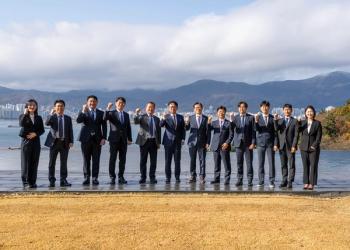
Myth Busters: Myth: More is Better
Equipment sizing decisions in the oil & gas industry frequently have to be made based on incomplete or uncertain data. Process conditions for turbomachinery are based on numerous assumptions about well performance, market conditions, environmental conditions and others.
Since the ultimate goal is to meet production commitments, the traditional way of addressing this is to use worst-case conditions, and often adding margins onto these. This will invariably lead to plants that are oversized, in some instances by large margins.
In reality, operating conditions are rarely the assumed worst-case conditions, but are usually more benign most of the time. Plants designed on worst-case conditions, once in operation, will therefore usually not operate under optimum conditions, have reduced flexibility, and higher capital and operating expenses. An actual extreme case was where three gas-turbine-driven compressors were installed in a compressor station, but the actual demand was so low that only one unit at below 50% load was needed.
During the Front End Engineering Design (FEED) process, engineers often make blanket assumptions on pressure losses across process exchangers, vessels, control valves, and so on, which can vary significantly from individual losses as defined in the manufacturer’s specifications. Certain licensed processes will also recommend that a +10% margin on flow be added to accommodate uncertainty during operation. These adjustments have been found to result in vast discrepancies between what was specified in a design office and what was found during start up in the field.
The planning of many oil & gas compression applications is based on limited data. This is often due to narrow windows of opportunity: oil or gas field leases require development within certain time frames, and market opportunities for pipelines or LNG facilities may be time critical. This can leave little time to fully evaluate reservoir or well performance before the order for long lead items (such as turbomachinery) have to be placed.
Similarly, hydraulic simulations for pipelines have certain margins of error. Again, market opportunities may present themselves, but many decisions have to be made without all delivery commitments. Certainly the capability of some turbomachinery suppliers to react within very short lead times helps to some extent.
In all these cases, we often find design assumptions based on the most adverse ambient conditions, pressure-loss calculations based on ample margins, gas compositions using the lightest expected gas (thus increasing power demand, stage count, and discharge temperatures from the compressors), and flow rates that are beyond the actual well performance, or the ultimate user demand.
The necessity for realistic margins between the power absorbed by a compressor and the available power from a gas turbine has to be pointed out.
The necessity for realistic margins between the power absorbed by a compressor and the available power from a gas turbine has to be pointed out. All too often, margins are applied while looking at the equipment performance under the most extreme conditions, that is, the compressor at its highest power operating point, and the gas turbine at the highest possible ambient temperature. Needless to say that, even without the margin, the probability that the gas turbine can ever use its maximum power is virtually nil. Rather, the units are oversized for practical operation purposes.
Compressor design points based on incorrect assumptions can also lead to lower production rates. In one instance, we had an export compressor, which was sized based on a design discharge pressure assumption. Later, it was found that other process equipment did not allow it to operate at this discharge pressure.
While the compressor was perfectly capable of running at the lower discharge pressure, it did so at a lower efficiency (because the operating point moved into the choke region). Thus, for the given driver size installed, the installation produced less gas than a design for the actual operation conditions.
Oversized installations with copious design margins are more expensive to build, and often generate higher operating expenses, and less production capability than installations with units that are sized closer to the actual operating conditions. The argument that these oversized units will always provide enough power to meet the operating conditions under any circumstances neglects accounting for the very small probability that all difficult circumstances occur at the same time.
Despite expensive company specifications and upper quartile maintenance practices, off-design operation continues to plague the industry with inefficient plant operation. Recent data taken by one major petrochemical producer indicated that over 80% of the pumps surveyed operated away from their intended design point by up to 20%. One estimate, places this cost at over $5 billion per year to the global energy and petrochemical industries largely stemming from failure and operational inefficiency.
Written by:
Klaus Brun, the Machinery Program Director at Southwest Research Institute in San Antonio, Texas. He is also the past Chair of the Board of Directors of the ASME International Gas Turbine Institute and the IGTI Oil & Gas applications committee.
Rainer Kurz, the Manager for Systems Analysis at Solar Turbines Incorporated in San Diego, CA. He is an ASME Fellow since 2003 and the chair of the IGTI Oil and Gas Applications Committee.
Newsletter
Power your knowledge with the latest in turbine technology, engineering advances, and energy solutions—subscribe to Turbomachinery International today.





